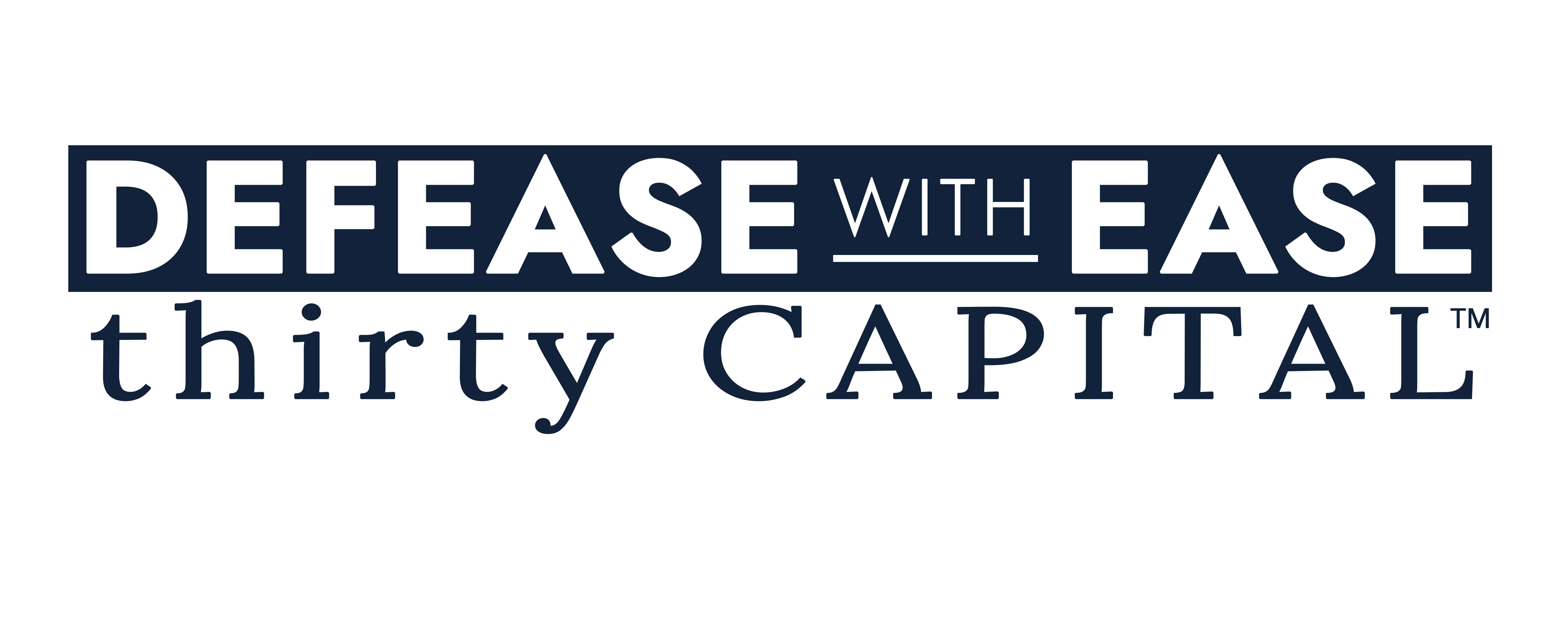Debt isn’t just a source of capital for commercial real estate (CRE) assets—it’s a strategic lever that, when structured properly, can drive sustained growth, minimize downside risk, and position your portfolio to minimize the effects of market volatility. As CRE owners and operators navigate tightening credit conditions and shifting asset valuations, the need for a resilient debt strategy that is both flexible and forward-looking has never been more critical.
At Defease With Ease | Thirty Capital, we believe resilience stems from thinking ahead: building systems, relationships, and capital structures that can withstand disruption while creating the flexibility to capitalize on opportunities.
What Makes a Debt Strategy Resilient?
A well-structured debt strategy is one that evolves with market dynamics, safeguards your assets, and supports long-term financial performance. At its core, it emphasizes four foundational principles:
- Liquidity preservation
- Interest rate risk management
- Flexible structures with optionality
- Data-driven refinancing and defeasance planning
Let’s explore how each contributes to long-term resilience.
1. Liquidity Preservation as a Risk Buffer
Liquidity is the backbone of any CRE operation. During downturns or market dislocations, having ample access to cash reserves generated through proper cashflow management can make the difference between weathering the storm and facing distress. A sound debt strategy ensures that debt service doesn’t compromise operational cashflow.
Common Tools:
- Cash reserves and debt service reserves
- Short-term credit facilities or revolving lines of credit
- Conservative debt service coverage ratio (DSCR) thresholds baked into underwriting
- Conservative operational assumptions or financial stress tests conducted during underwriting
Key Tactics:
- Maintain minimum 6–12 months of debt service reserves, particularly for Class B/C assets. Depending on the asset type and class, debt service reserves may be required by lender, in which case maintaining additional debt service reserves is beneficial.
- Establish liquidity contingency plans that include vendor payment timing and capital project deferrals.
Example:
A CRE firm managing a 10-property portfolio with an average DSCR of 1.35 runs quarterly stress tests. In one scenario, a 10% decline in NOI caused DSCR to drop below 1.0, and a movement in market cap rate from 5% to 7% caused LTV to move from about 70% to 85%, risking loan covenant violations. The firm used a short-term line of credit to preemptively pay down one high-risk loan and adjusted its reserve targets accordingly.
2. Interest Rate Risk Management: Mitigating Volatility
In the current macroeconomic environment, interest rate volatility presents one of the most significant threats to portfolio performance. Resilient debt strategies account for this risk and mitigate it through hedging instruments and active portfolio monitoring.
Common Tools:
- Interest rate caps
- Swaps and swaptions
- Staggered maturity structures
Key Tactics:
- Track cap expirations and swap rates 12–18 months ahead using debt management platforms like Lobby CRE.
- Hedge selectively based on exposure concentration, not just loan size.
- Understand and integrate forward looking interest rate curves into analysis to optimize any transaction timing.
Example:
A multifamily owner with a $20M floating-rate loan at SOFR + 300 bps purchased a 3.5% cap, limiting the all-in rate even as SOFR rose above 5%. When the cap approached expiration, they worked with their debt advisory partner to model future interest scenarios and restructured the loan into a fixed-rate option with embedded prepayment flexibility.
On-Demand Virtual Case Study: See how a CRE owner proactively managed an expiring rate cap prior to maturity for increased savings. Watch now →
3. Flexible Structures: Building Optionality Into Your Capital Stack
In uncertain markets, rigid capital structures can hinder your ability to respond quickly. Lenders increasingly value borrowers with built-in flexibility—features like extension options, prepayment terms, and layered capital sources provide room to maneuver when conditions shift.
Common Tools:
- Prepayment flexibility (step-down or no prepayment penalties)
- Loan assumption clauses
- Preferred equity or mezzanine debt tranches
- Covenant-lite structures with extension options
Key Tactics:
- Structure deals with baked-in options like rate lock extensions or interest-only toggles.
- Structure loan terms to include multiple prepayment options, including Defeasance, Yield Maintenance, Fixed-Stepped, and Open Prepayment.
- Underwrite based on both the base case and downside exit scenarios.
In 2023, a client facing a maturity wall on a $50M office asset negotiated a partial paydown and loan extension. The original loan included extension options and looser prepayment terms, which gave them leverage in restructuring. As a result, they preserved equity, extended their runway, and avoided default.
4. Data-Driven Decision Making: Using Analytics to Time the Market
Many CRE owners and operators wait too long to act on refinancing or restructuring. A data-informed approach helps you anticipate key inflection points—using real-time insights to guide decisions, reduce risk, and seize opportunities early.
Common Tools:
- Debt optimization platforms
- Real-time market comps and lender term tracking
- Automated refinance readiness dashboards
Key Tactics:
- Set quarterly portfolio reviews with your debt advisor.
- Monitor loan-level and portfolio-level refinance breakeven points continuously.
- Forecast operational activities on a quarterly basis and overlay debt assumptions against operational forecasts, allowing you to optimize proceeds upon any transaction.
Example:
A firm with a $30M portfolio used Lobby CRE to analyze whether to refinance or hold an existing loan with two years left to maturity. The breakeven analysis showed they could lower their weighted average cost of capital by 75 bps by refinancing early, even after including defeasance costs.
Final Thought: Resilience as a Competitive Advantage
In a market where capital is more expensive and lenders are more selective, CRE owners and operators with a resilient debt strategy will outperform. Being prepared doesn’t just help you weather tough markets—it enables you to act decisively when new opportunities emerge.
At Defease With Ease | Thirty Capital, we act as strategic partners to our clients, helping them design and implement debt strategies that are durable, flexible, and growth oriented. With 25+ years of structured finance expertise, we help clients reduce refinancing friction, hedge rate exposure, and plan for the long term.
Ready to future-proof your debt? Let’s talk about building resilience into your capital stack before the next cycle hits.





